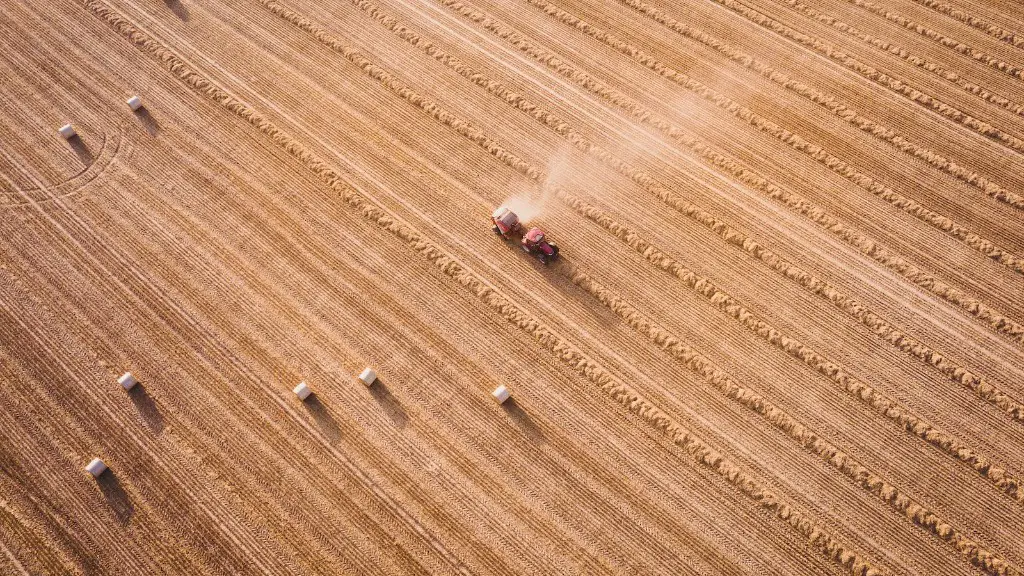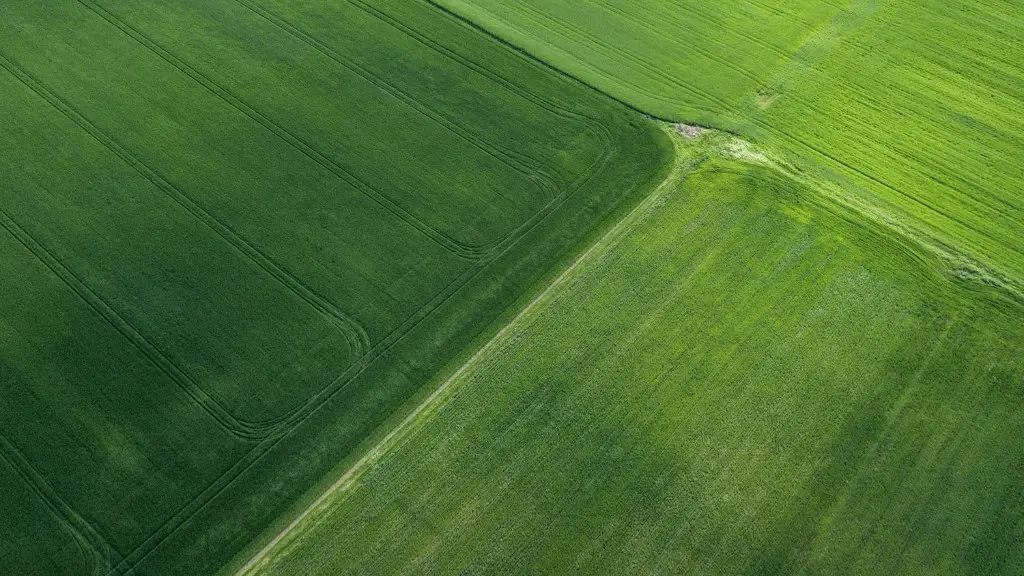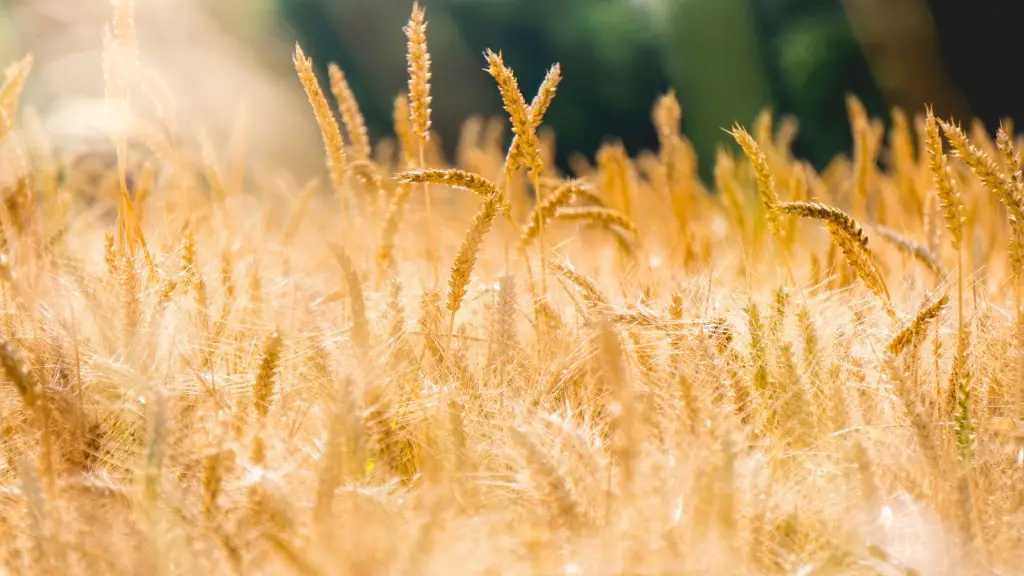Intensive subsistence agriculture is a type of agricultural practice mainly found in densely populated areas of the world. It is characterized by a lack of mechanization, small scale production and a large reliance on manual labor. This type of farming is typically practiced in locations with high population density, small plots of land and limited access to resources. The most common form of intensive subsistence agriculture is found in parts of India and China, where it is still used to support the large and growing populations of these regions. Other places where intensive subsistence agriculture is practiced include some parts of Southeast Asia, Africa and South America.
One of the main reasons for the continued use of intensive subsistence agriculture in these areas is the poor quality of the land. In many regions, the land is of poor quality and does not support large scale mechanized agriculture. This forces farmers to rely on the labor-intensive processes that make up intensive subsistence agriculture. In addition, the cost of mechanization and fuel is often prohibitively expensive for farmers, making it prohibitively expensive to adopt modern farming practices.
Another reason why intensive subsistence agriculture remains popular in these regions is the limited access to modern technology. In many cases, the lack of advanced machinery, storage facilities and fertilizers makes it difficult to establish large scale, profitable farms. This leads many local farmers to opt for the more labor-intensive, but still cost-effective, forms of agriculture.
Intensive subsistence agriculture is also common in places where access to arable land is limited. In some parts of the world, such as in Africa, the availability of land is limited, making it hard to cultivate crops which require large amounts of space. This forces farmers to rely on more labor-intensive forms of agriculture to generate enough produce to make a profit.
Finally, poverty levels in these regions also play a role in the prevalence of intensive subsistence agriculture. In many cases, farmers are unable to afford the high costs associated with modern farming techniques, such as mechanization, irrigation, fertilization and storage. This means that farmers must rely on their own labor and the resources available in their environment to grow the crops they need for food and income.
Impact of Intensive Subsistence Agriculture
Intensive subsistence agriculture has long been a way of life for many people in developing countries, but it is not without its drawbacks. The most significant of these is that it places a significant strain on natural resources and the environment. As farms become more intensively managed, they also become more reliant on chemical inputs and irrigation which can lead to soil degradation and water contamination. This may result in decreases in overall crop yields and an increased need to use additional land for cultivation.
Furthermore, this type of farming is often characterized by low productivity. This is due to the lack of mechanization and limited access to modern technology. As a result, yield potential remains low and production costs are high. Moreover, the high dependence on manual labor and the lack of modern machinery can restrict the flow of labor to more profitable activities, leading to overall poor economic performance.
Finally, intensive subsistence agriculture can lead to agricultural non-sustainability. This occurs when the land is used intensively for a short period of time and then quickly reverted back to its original state, usually resulting in soil erosion and subsequent decreases in fertility. This, in turn, can lead to reductions in yields and further harming the livelihoods of those dependent on subsistence agriculture.
Long-term Solutions
In order to help address the drawbacks of intensive subsistence farming, long-term solutions must be implemented. One of these is the introduction of modern agricultural techniques, such as mechanization and storage facilities, that can increase overall productivity and efficiency. These technologies can also help reduce production costs and increase the profitability of farms.
In addition, land reforms can be used in order to address the issue of limited access to arable land in some areas. Land reforms, such as land redistribution and communal ownership, can help to make land more accessible to small scale subsistence farmers, helping to improve the livelihoods of those dependent on intensive subsistence agriculture.
Governments and aid organisations must also work together to develop and implement education and training programs. These programs can help to increase the overall knowledge and understanding of modern agricultural techniques and technologies, which can then be used to improve production on subsistence farms.
Finally, government policies can help to promote more sustainable agricultural practices. Such policies could include restrictions on the use of certain chemicals, support for the development of organic farms, investment in infrastructure and subsidies for irrigation, fertilization and storage.
Socioeconomic Impact
Intensive subsistence agriculture has far-reaching social and economic consequences. While it is true that subsistence farming is essential to the livelihoods of many small-scale farmers in developing countries, it can also lead to poverty and inequality. This occurs due to the lack of mechanization, low yields and high dependence on manual labor. As a result, those working in subsistence agriculture often find themselves in difficult economic situations, unable to earn enough to sustain themselves and their families.
Moreover, family structures and communities can also be adversely affected by intensive subsistence farming. The need to constantly work on the farm often leaves little time for other activities, such as attending school or engaging in other social activities. This can have long-term implications for the development of the individuals and the communities they live in.
Intensive subsistence agriculture also greatly influences food security in the region. As mentioned previously, subsistence farming often leads to low yields and substandard crops. This, in turn, can lead to food shortages and malnutrition, with long-term impacts on the health of affected individuals.
Environmental Impacts
The environmental impacts of intensive subsistence agriculture can be significant. As discussed earlier, this type of farming often relies heavily on chemical inputs, such as pesticides and fertilizers, which can have a negative impact on the environment. This is especially true if the use of such chemicals is not properly managed and monitored. Moreover, the use of irrigation can also lead to water contamination, soil erosion and soil degradation. These environmental impacts can further reduce crop production and contribute to the overall decline in soil fertility.
Furthermore, intensive subsistence agriculture can also have a negative impact on biodiversity. Monocropping and the over-exploitation of resources can lead to local species extinctions, which may leave entire ecosystems unbalanced and unable to support life. This can further reduce crop yields, leading to greater food insecurity and malnutrition.
Finally, intensive subsistence farming can also lead to deforestation and soil erosion. The need to clear more land to farm often leads to the clearing of forests, which can lead to soil erosion and lower soil quality. In addition, over-grazing, monocropping, and continued ploughing can destroy soil structure and fertility, reducing production in the long-term.
Conclusion
Intensive subsistence farming is a type of agricultural practice mainly found in densely populated areas of the world. It is characterized by a lack of mechanization, small scale production and a large reliance on manual labor. While it is true that subsistence farming is essential to the livelihoods of many small-scale farmers in developing countries, it can also lead to poverty and inequality, food shortages and malnutrition, environmental degradation and biodiversity loss. In order to help address the drawbacks of intensive subsistence farming, long-term solutions must be implemented which involve the introduction of modern agricultural techniques, land reforms, educational programs and government polices.




